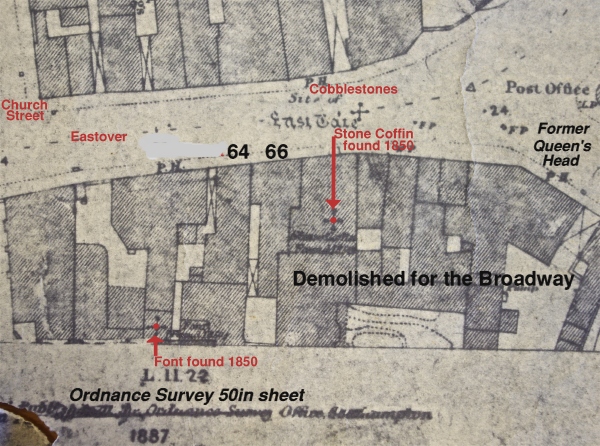


|
 A Purbeck marble coffin with finely ashlared sides covered with a slab with a delicate foliate cross in relief lying in the middle tomb recess, south aisle, St Mary's church. The small incised Lias slab on top is from a separate tomb. See here for further detail. |
|
A broken stone font in the north porch of St Mary's church. Brakespear reordered that church in 1850-54, and it is possible that the font was
transferred from its site of discovery in Eastover to its position in the parish church. A broken piece has been inverted and set above the font. The octagonal base is typical for an early medieval font. |
